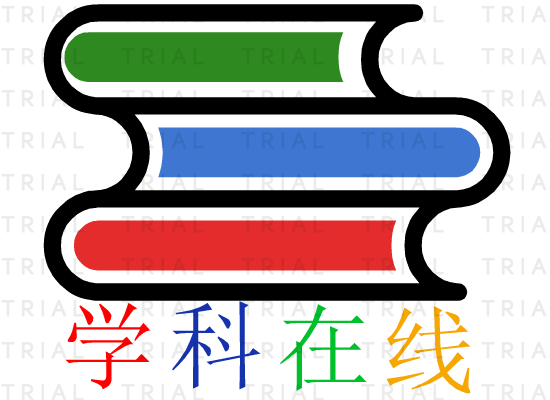考点1·词汇辨析
achieve实现(某一目标、地位、标准),完成,成功,approach“接近”,attain通常是指通过努力获得和实现,acquire“学到,取到”;
award 奖品,奖金,reward 奖励、回报、奖励,allowance津贴,补贴,prize奖,奖,难能可贵的东西;
at times“有时”, to the minute恰到好处,一分不差,day by day 一天天,around the clock昼夜不停;
other than“除了……不同的是,不(常用于否定结构),
rather than“而不是……”,or rather更准确地说,or else“否则,要不然”。
考点2·动词时态和语态
(1 )现在,按计划安排即将到来的动作。
考点2·动词时态和语态
(1 )现在,按计划安排即将到来的动作。She is leaving for Beijing.
(2)现在,描述更加生动,而不是动。The Yangtze River is flowing into the east.
(3)
现在完成的时候重点是动作一直在进行,即动作的连续性。
— Hi, Tracy, you look tired.
— I am tired. I have been painting the living room all day.
(4)以下主动形式常表示被动意义:
The window wants/needs/requires repairing.
The book is worth reading twice. The door won’t shut.
The play won’t act. The book 学科分类号 sells well.
The dish tastes delicious. Water feels very cold.
考点3·状语从句
(1)
时间状语从句
常用指导词:when, as, while, as soon as, before, after, since, till,until
首都师范大学科德学院学费
特殊指导词:the minute, the moment, the second, every time, the day, the instant, immediately, directly, no sooner … than, hardly …when, scarcely … when
I didn’t realize how special my mother was until I became an adult.
Every time I listen to your advice, I get into trouble.
(2)目的状语从句
常用指导词:so that, in
初中学科order that
特殊指导词:lest, in case, for fear that, in the hope that, for the purpose that, to the end that
The boss asked the secretary to hurry up with the letters so that he could sign them.
The teacher raised his voice on purpose that the students in the back could hear more clearly.
(3)让步状语从句
常用指导词:though, although, even if, even though
特殊指导词:as (必须在让步状语从句中倒装), while (一般用于句首), no matter…, in spite of the fact that, whatever, whoever, wherver, whenever, however, whichever
Much as I respect him, I can’t agree to his proposal.
The old man always enjoys swimming even though the weather is rough.
考点4·主语从句
引导主语从句的连词 that 有时可省,有时候不能省,原则是:
若that 引导的主语从句直接位于句,则 that 不能省略;若 that 引导的主语从句位于句,形式主语用于句首 it,则 that可以省略。
如:That you didn’t go to the talk was a pity.
It was a pity (that) you didn’t go to the talk.
考点5·
定语从句
先行词只用 which/ who/ whom 的情况:
(1)在非限制性定语从句中,只能用 which 指代物,用 who/whom 指人。
(2)在介词中 关系代词引导的定语从句只能使用which 指物,whom 指人(介词 which定语从句一般分别做
因此,介词 which可单独使用 when, wher, why 代替)。
(3)先行词本身就是 that 时间,关系词 which,先行词为 those, one, he 时多用 who。
考点6·虚拟语气
if 虚拟条件句的结构
条件从句谓语主句谓语
与现在的事实相反If 主语 动词过去式 主语 should/would/could
(be 动词用 were) /might 动词原形
与过去的事实相反If 主语 had 过去分 主语 should/would/could /might have 过去分词
与未来事实相反If 主语 动词过去式 主语 should/would/could
If 主语 were to 动 /might 动词原形
If 主语 should 动词原形
考点7·语言学
会话意义理论的特征:
(1)可推导性 calculability
说话者试图表达的会话意思可以被听者理解。
(2)可取消性 cancellability
会话意义是由一些外部因素引起的,当这些因素发生变化时,会话意义也会发生变化,原意可以取消。
(3)不可分离性 non-detachability
这意味着会话的意思与语义内容和语言形式无关。因此,在表达某种会话意思时,统一替换句子中的某些单词,不会改变句子的会话意思。
(4)非合同性 non-conventionality
会话的意思不是话语的规定。
(4)非合同性 non-conventionality
会话的意思不是话语的规律意义。也就是说,会话的意思不是字面意思,也不是字面意思的衍生意思。它是通过合作原则中的标准,通过字面意义,结合语境来推导的。字面意义在话语中不变,会话意义根据语境的不同而变化。
考点8·阅读技能教学
(1)阅读技能教学的目的是培养阅读策略;培养语感;特别强调培养学生在阅读过程中获取和处理信息的能力。
(2)基本技能:略读:(skimming);找读(scanning);预测以下内容;理解大意;区分文章中的事实和观点;猜测意思;推理判断;理解关键细节;理解文章结构;理解图表信息;理解指代关系;理解逻辑关系;理解作者的意图;评估阅读内容。
(3)相关教学活动:
略读:即选择性地进行跳跃式阅读,了解文章的大意。可采用三个步骤:1。阅读文章的开始和结尾;2。找到主题句子,仔细阅读其他段落的主题句子;3。浏览一些与主题句子相关的信息词。
阅读:需要在很短的时间内准确找到目标,可以使用主题词、标题或表格、板和印刷特点快速阅读教学内容,可以回答问题、解释总结意义、制作图表、判断真实性、排序、填写表格、填写信息、连接等教学活动。
考点9·教学设计的基本结构
Teaching Content:
Teaching Objectives:
Knowledge aim: Ss can …
Ability aim: Ss can …
Emotional aim: …arouse Ss’ interests/awareness…
Teaching Key Points:
Teaching Difficult Points:
Teaching Procedures:
Sep 1: Warming up
Step 2: Pre-
Step 3: While-Step 4: Post-Step 5: Summary and homework….Blackboard Design









